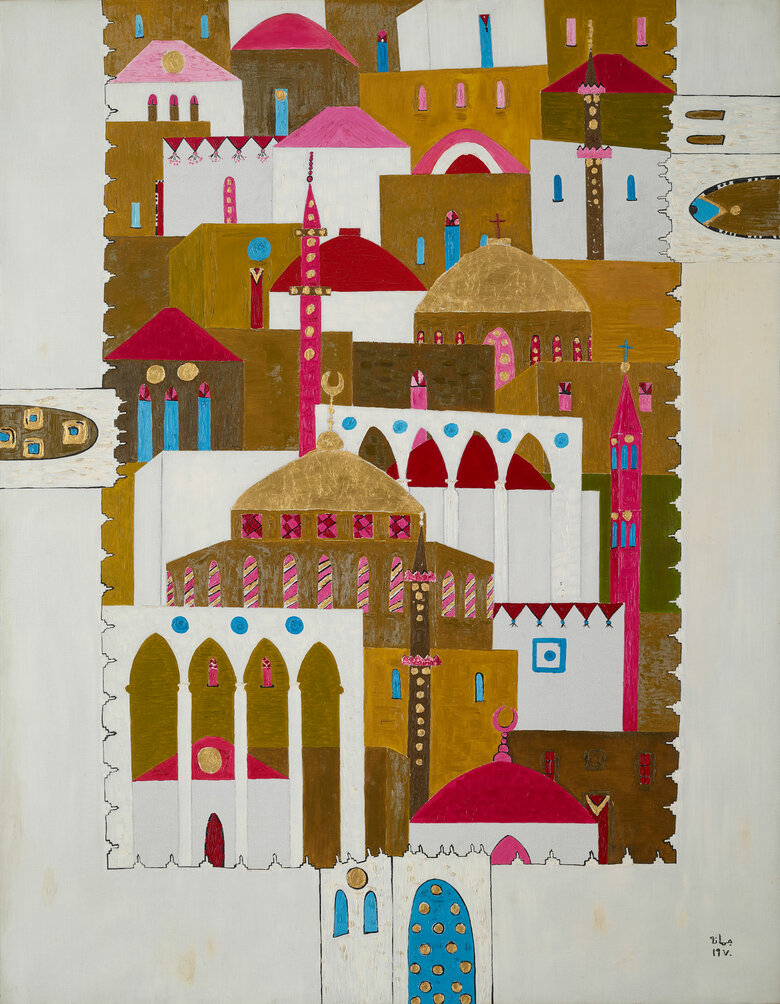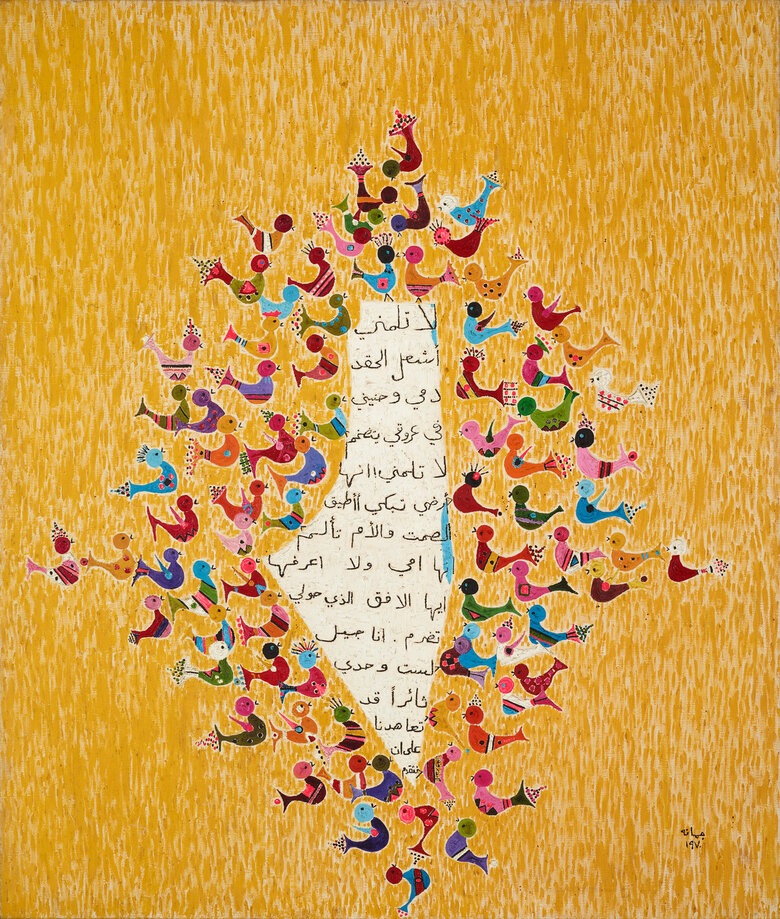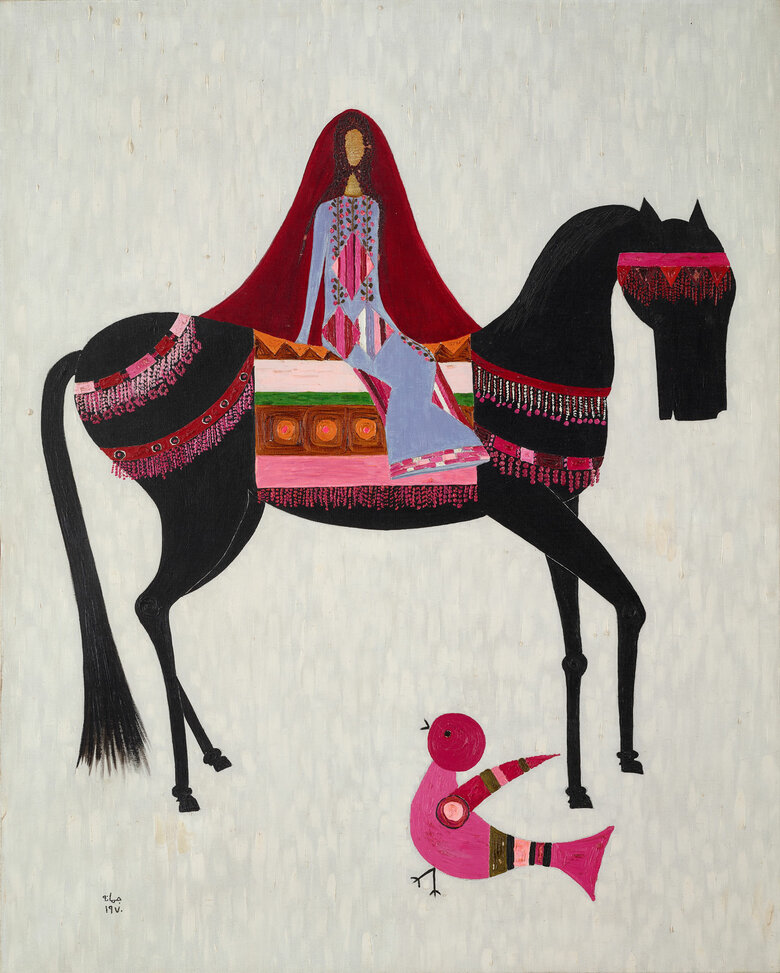Untitled, 1989, depicts several compiled rectangular shapes painted in olive green against a pastel pink and light gray background. On a closer look, the rectangular masses are created with acrylic paint swiped repetitively across the canvas using a squeegee technique[1]. Altogether, these shapes form one large oblique green rectangular form that occupies much of the painting's central part.
Within her rectangular shapes resembling letter envelopes, El-Husseini incorporates scribbles reminiscent of Arabic handwriting; she further splatters black, pink, and olive-green paint blotches around them. Amber, white and pastel-pink patches of paint surround the overall central rectangular form. The omnipresent central form floats within a broad halo-like surface. Other scribbles and smudged masses applied with white paint take up almost half of the painting's left surface. Although the scribbles resemble Arabic handwriting, written from left to right, they are unintelligible. Nonetheless, they signify faded texts of long-forgotten letters.
Living in exile for almost all her life, Palestinian artist Jumana El Husseini has persistently expressed her longing for her homeland through her art. El-Husseini describes Untitled, 1989, as “letters to my dead mother” who is buried in Jerusalem and whose grave she cannot visit; as such, in Untitled, 1989, El Husseini addresses the homeland, loss, and memory.
Untitled, 1989, poignantly expresses the artist's desire to reconnect with the past, namely with her deceased mother. The swiped paint and the unintelligible text allude to the passage of time – a long-buried memory. Moreover, Untitled, 1989, hints at the artist's enduring connection to her homeland, reflected in her choice of an Arabic-like script and an earthy color palette. It is a revisit to her childhood period while growing up in Jerusalem.
Untitled, 1989, is certainly an expressive and symbolic work. It conveys a sense of emotional turmoil through the multi-directional linear scribbles set against oblique planes, and the contrast between the oversized rectangular 'envelopes' and the tiny scribbles.
Furthermore, the somber color palette and the imposing central green form create an ominous mood. In stark contrast with its sinister character, however, the artist's elegant execution gives Untitled,1989, an ethereal quality, as demonstrated by the subdued pastel pink background and some soft curved lines.
There still is a sense of hope in El-Hussein's work. Indeed, the translucent white scribbles seem to shimmer against the dark background, like stars in an obscure sky. Clearly distinct from the rest of the painting's elements, the glowing scribbles allude to a new chapter. Moreover, the amber haze can be construed as burning flames of Jerusalem's memory, or as the illuminating light of a new beginning. In her Imagined letters to her deceased mother in Jerusalem, El Husseini creates a cryptic language that conveys both the struggle of a painful reality and the gleaming hope of a better future.
Notes:
Signed in Arabic and English and dated "1989" on the lower left front
















